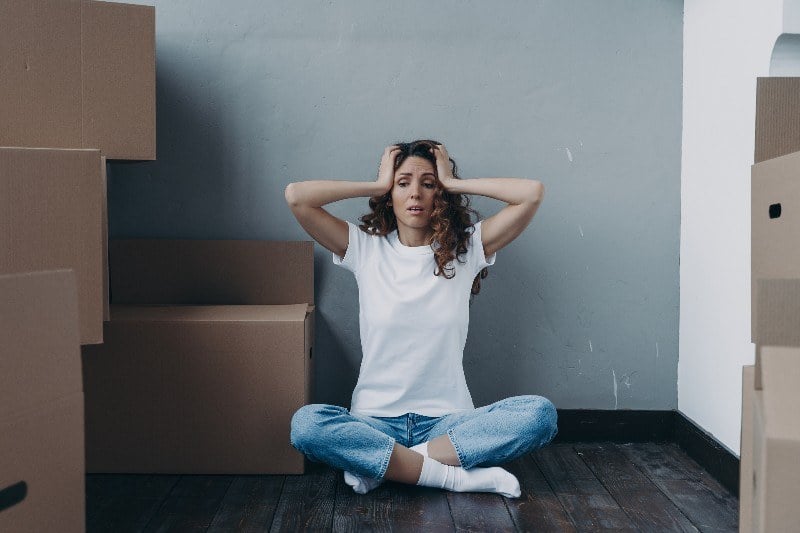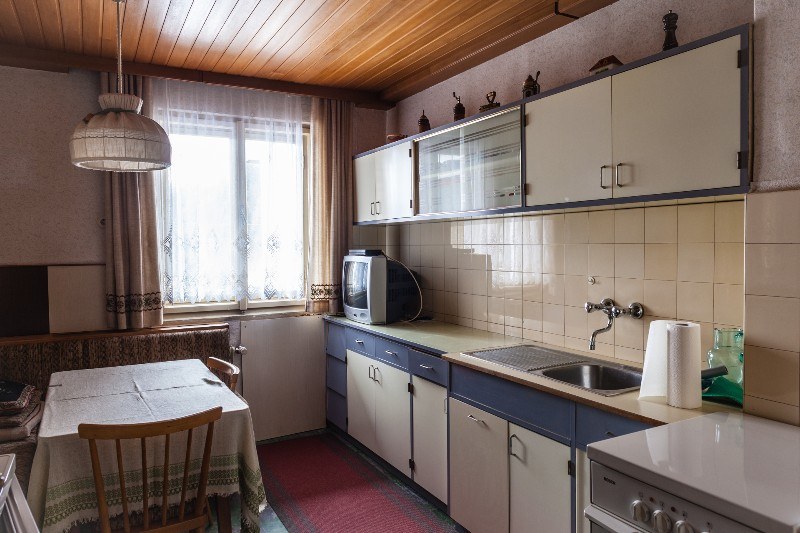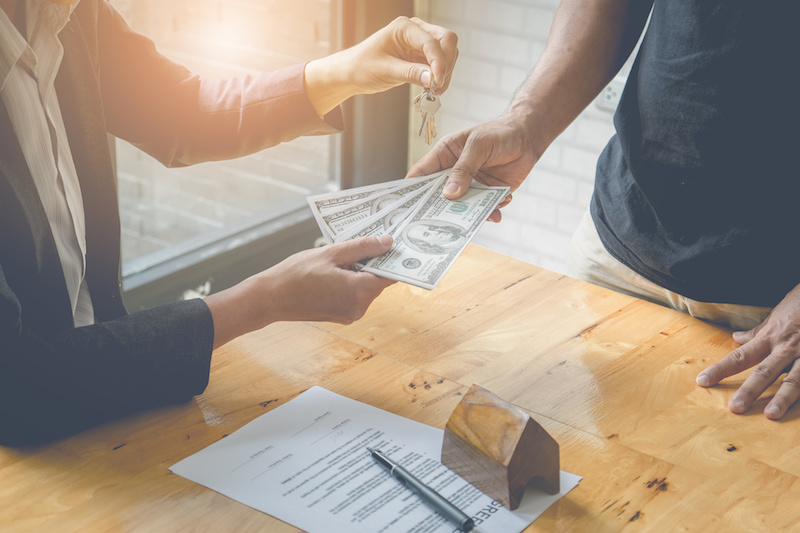
Should I Buy a House as a Single Person?
Posted on Sep 19, 2025
Is it hard for a single person to buy a house? This question is often at the forefront of people’s...

Posted on Sep 19, 2025
When selling a home, staging can make a big difference in attracting buyers and achieving a higher sale price. You have two main options: virtual staging or real staging. Virtual staging is a cost-effective, digital approach that enhances photos of empty rooms, while real staging involves physically furnishing a property for in-person showings. Here's a quick breakdown:
Virtual Staging: Costs range from $20–$150 per image or $100–$400 per room. It's quick (24–72 hours), has no ongoing fees, and is great for online listings.
Real Staging: Costs range from $1,000–$10,000, with furniture rental fees of $500–$600 per room monthly. It creates a stronger in-person impact but involves higher costs and logistics.
|
Factor |
Virtual Staging |
Real Staging |
|---|---|---|
|
Initial Cost |
$25–$150 per room |
$500–$600 per room/month |
|
Total Cost |
$200–$600 per home |
$1,000–$10,000 (avg. $1,800) |
|
Setup Time |
24–72 hours |
3–7 days |
|
Monthly Fees |
None |
$100–$600 per room |
|
Best For |
Online marketing |
In-person showings |
Virtual staging is ideal for sellers on a budget, while real staging is better suited for high-end properties or those requiring a physical presence. Choose based on your budget, timeline, and market needs.
Virtual staging is a modern, budget-friendly alternative to traditional staging. By digitally furnishing empty rooms, it helps real estate professionals showcase properties with eye-catching visuals - without the hefty price tag of physical staging.
The cost of virtual staging depends on factors like customization, the number of images, and the service provider. Most services charge either per image or per room, with discounts often available for larger projects.
Per-image pricing: This is the most common model, with costs ranging from $20 to over $100 per image, depending on quality and customization levels [1][5]. For instance, VirtualStaging.com offers a flat rate of $24 per image, regardless of complexity [3]. On the more affordable side, AI-based platforms like StagerAI provide subscription plans starting at $16 per month for six images, bringing the cost to less than $3.20 per image [4].
Per-room pricing: Prices typically start around $100 for a single room and can exceed $400 for multiple rooms or premium customizations [2][5]. Additional features like rush orders, bespoke furniture designs, or enhanced services may increase the cost [1][2][4].
Understanding these pricing structures can help you make informed decisions when planning your staging budget.
Virtual staging has several advantages over physical staging, with affordability being one of the biggest. Traditional staging can be costly, but virtual staging provides a visually appealing alternative at a fraction of the price. Plus, it’s fast - many companies deliver completed images within 24 to 48 hours.
Another benefit is its convenience. Since everything is digital, there’s no need to deal with furniture delivery, setup, or removal. This eliminates logistical headaches and potential extra costs.
Flexibility is also a major plus. If your listing isn’t generating enough interest, you can easily tweak furniture styles, color schemes, or room layouts. You can even experiment with multiple options to see which resonates most with potential buyers. This adaptability allows you to tailor your property’s presentation to different buyer preferences. However, virtual staging does come with some limitations.
Despite its perks, virtual staging has its challenges. It only enhances online listings, so when buyers visit the property in person, they’ll see empty rooms. This contrast can sometimes leave a less favorable impression.
High-quality photography is crucial for virtual staging to work effectively. Poor lighting, bad angles, or low resolution can ruin the final result, which means professional photography is often a necessary (and additional) expense.
There’s also the matter of disclosure. Many states require sellers to clearly state when photos have been virtually staged. While this transparency builds trust with buyers, it might reduce the emotional impact of the images.
Lastly, some budget services use generic furniture designs, which can make your listing look like many others on the market. And while virtual staging works well for spaces like living rooms, bedrooms, and dining areas, it’s less effective for kitchens and bathrooms. Buyers focus on fixtures and finishes in these spaces - elements that digital enhancements can’t replace effectively.
Real staging involves physically furnishing and decorating your home with actual furniture and decor. Unlike virtual staging, it allows buyers to walk through and experience the space in person, offering a more immersive impression. Let’s break down the costs and benefits of this approach.
The cost of real staging can vary widely depending on factors like the size of your property, its location, and the duration of the staging. While it’s a more expensive option compared to virtual staging, the physical presence of furniture can leave a lasting impression on potential buyers.
On average, real staging expenses range from $1,000 to $10,000, depending on the market and property size. Most homeowners typically spend between $780 and $2,850, with the average cost hovering around $1,800 [9].
Here’s a closer look at the main cost factors:
Furniture rental: Professional services charge $500 to $600 per room per month, while DIY rentals cost around $100 to $300 per room monthly [6][7][9].
Professional stager fees: Full house staging typically costs $800 to $1,500 as a flat rate, or you can pay hourly rates ranging from $25 to $125 for consultations [6][9].
Additional services: These can include:
"Due to its complexity and the resources required, professional staging can be costly." - Texas Real Estate Source [6]
Real staging creates a tangible emotional connection for buyers. Walking through a fully furnished home helps them envision their future life there, which can lead to quicker decisions.
The results speak for themselves. According to the National Association of Realtors, staged homes sell up to 88% faster and can command up to 20% higher prices compared to unstaged homes [9]. Shital Gohil, Co-Founder and COO of Styldod, supports this, emphasizing that staged properties consistently outperform their unstaged counterparts in both sale speed and final price [9].
Real staging is particularly effective for luxury properties, where buyers expect to see high-quality furnishings that complement the home’s price point. For these buyers, professional staging can highlight premium finishes and showcase the home’s architectural features in a way that empty rooms simply can’t.
Another key advantage is that the physical furniture helps buyers better understand room dimensions and layout. Empty rooms can feel smaller or oddly shaped, but well-placed furniture demonstrates how the space can be utilized effectively. This is especially helpful for homes with unconventional layouts or rooms with challenging proportions.
That said, real staging isn’t without its challenges.
The biggest downside to real staging is the cost. It requires a significant upfront investment, and if your home remains on the market longer than expected, the monthly furniture rental fees can quickly add up. For example, a property that takes four months to sell will cost much more to stage than one that sells within six weeks.
Logistics can also be a headache. Coordinating furniture delivery, setup, and maintenance takes time and effort, often requiring additional fees. The setup process itself can take several days, during which your home won’t be available for showings.
Another issue is seasonal demand. During peak selling seasons like spring and summer, staging companies often raise their rates due to increased demand [8]. This means you may face higher costs when competition among sellers is at its peak.
Finally, flexibility is limited with real staging. Unlike virtual staging, where you can quickly adjust layouts or color schemes, any changes to real staging require physically swapping out furniture or decor. These adjustments not only cost extra but also take time to implement.
Real staging can deliver impressive results, but it’s important to weigh the costs and logistical challenges before committing.
Let’s break down the costs of virtual staging versus real staging to see how they measure up.
|
Factor |
Virtual Staging |
Real Staging |
|---|---|---|
|
Initial Cost |
$25 – $150 per room |
$500 – $600 per room per month |
|
Total Project Cost |
$200 – $600 for the entire home |
$1,000 – $10,000 (average around $1,800) |
|
Setup Time |
24 – 72 hours |
3 – 7 days |
|
Monthly Fees |
None (one-time cost) |
$100 – $600 per room |
|
Flexibility |
Easy changes anytime |
Limited; requires physical swapping |
|
Marketing Impact |
Online listings only |
Online plus in-person showings |
|
Best For |
Budget-conscious sellers |
Higher-end properties and competitive markets |
Virtual staging is far more affordable upfront, with no recurring fees, making it a one-time investment. On the other hand, real staging can quickly become a significant expense due to its monthly costs. Virtual staging also has the edge in speed, with photos ready in just a few days, compared to the longer setup time needed for real staging. This time-saving advantage can be crucial in fast-paced markets. The table above highlights how these two approaches differ in terms of cost, time, and flexibility.
If you’re keeping an eye on expenses, virtual staging is a smart choice. Its lower upfront cost allows you to allocate funds toward other priorities, like professional photography, minor home upgrades, or additional marketing strategies. Plus, with no ongoing fees, it’s easier to manage your budget.
Real staging, however, shines when creating a memorable, in-person experience. For higher-value homes, the physical presence of well-placed furniture and decor can help buyers emotionally connect with the space. This is especially important in competitive markets, where standing out from similar listings can make all the difference.
Real staging is also a practical solution for homes with tricky layouts. Seeing actual furniture in the space can help buyers visualize how the home functions, reducing the chance of mismatched expectations when they visit in person.
So, whether you’re focused on saving money and moving quickly with virtual staging or aiming for a high-end, immersive presentation with real staging, the choice depends on your priorities and property needs.
Both virtual and real staging enhance your home's appeal, but they do so in distinct ways. Evaluating the return on investment (ROI) for each option can help you decide which approach aligns better with your financial goals.
Virtual staging offers a compelling ROI due to its low upfront costs and ability to attract attention online. It allows sellers to experiment with different design styles without committing to physical changes. By enhancing your home's digital presence, virtual staging can generate more interest and potentially speed up the selling process.
One key advantage is its quick turnaround time, which helps get your listing up faster and reduces the risk of needing price reductions. However, virtual staging primarily focuses on the online aspect of your listing. This can sometimes create a gap between buyers' expectations and their experience during in-person showings. To address this, many sellers pair virtual staging with other marketing efforts to keep buyers engaged when they visit the property.
Real staging often justifies its higher cost by delivering tangible results. A physically staged home can create an emotional connection with buyers, often leading to stronger offers and smoother negotiations. This method can also help increase the sale price and reduce the time your home spends on the market.
In markets where buyers expect a polished presentation, real staging can make a significant impact. Beyond creating a great impression during showings, it enhances marketing materials like photos and virtual tours, making your listing stand out. Additionally, shorter market times can help cut down on ongoing expenses like mortgage payments, utilities, and maintenance. However, it’s important to consider that longer selling periods can increase staging costs, so understanding your market and pricing your home appropriately is key.
Houwzer's approach helps you get the most out of your staging budget. Here’s how their commission model and services work together to make your home stand out.
Houwzer’s 1% listing commission reshapes the financial picture for staging. In 2024 alone, homeowners saved an average of $12,000 with Houwzer, cutting costs by nearly 50% compared to traditional commission models [10].
"Houwzer made the process of selling our home very easy to manage. Their systems and staff helped us know exactly what was needed and the next steps. We received a higher level of care and support than a 'typical' real estate agent. After having sold houses in the past through Realtors that take a [larger] percentage, Houwzer has been the easiest, most stress-free, and saved us a lot of money. Would highly recommend them!"
– MJ, Howzer client [10]
By reducing commission expenses, Houwzer gives you the flexibility to allocate resources toward enhancing your home's presentation, making it even more appealing to potential buyers.
With the savings from Houwzer’s low commission, full service model, you can invest in services that elevate your staging efforts. For example, professional photography ensures your staged home looks its best in every listing.
For high-volume sellers like investors, flippers, and builders, Houwzer Pro offers additional tools to enhance your staging strategy. This includes professional photography and video services, multi-state MLS management, and in-depth market analysis and valuation. These features work in harmony to maximize your property’s appeal and reach.
Deciding between virtual and real staging comes down to your budget, timeline, and the type of property you're selling. Virtual staging offers a budget-friendly option with a fast turnaround, making it ideal for online marketing. On the other hand, real staging provides a more immersive experience that can help buyers form a deeper connection with the property.
Each method has its strengths, but the right choice depends on your financial and marketing goals. For sellers focused on affordability, combining virtual staging with professional photography can create strong online appeal. Meanwhile, homes that benefit from a fully furnished, in-person presentation may gain more from real staging.
If selling quickly and staying within a tight budget are your top priorities, virtual staging is a smart choice. But if your goal is to create an in-person experience that resonates with buyers, real staging might be worth the investment. With Houwzer's cost-saving commission model, you can redirect savings into your marketing strategy, ensuring your property stands out in a competitive market.
Subscribe to our newsletter to get essential real estate insights.

Posted on Sep 19, 2025
Is it hard for a single person to buy a house? This question is often at the forefront of people’s...

Posted on Sep 19, 2025
Home prices have shot up over the past few years, making homebuying an even more challenging...

Posted on Sep 19, 2025
First-time homebuyers will often save and save for the down payment for their home, but all too...